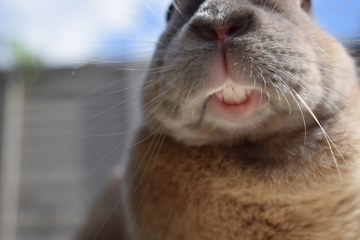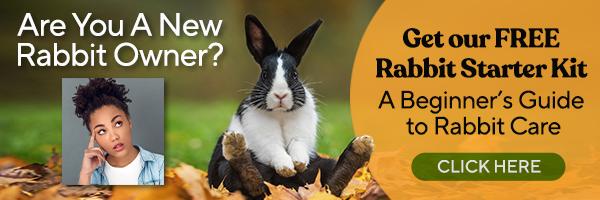5 Things to Consider Before Adopting a Rabbit
Have you (or your children) ever had bunny fever? Maybe you visited someone who had an adorable bun, or your child fell in love with the ball of fluff at the pet store or shelter. Now, you’re wondering if adding a rabbit to your household would be a good idea. It certainly could be. Bunnies and other small animals like chinchillas and guinea pigs can make wonderful companion animals for the right household. But before you rush out and adopt a bunny, learn what all that entails.
Click Here For a Beginners Guide to Rabbit Care.

1. Rabbits Are Not Low Maintenance Pets
In truth, there are very few low-maintenance pets in the world and thinking that rabbits are one of them because they are small is a misconception that can (and will) end quite badly for the bun. Domesticated rabbits can live up to a dozen years. Ask yourself if you can commit to that length of time and care? Within that length of time, you’ll have to make sure you they have an enclosure (outdoors, indoors, or both), playtime, socializing, proper bedding, and toys, along with the right food.
Their enclosure is just one of things that makes them a high maintenance pet. Wanting your rabbit to be an outdoor bun? Consider the following for an outdoor enclosure:
Do you have the space to purchase an outdoor hutch for them? Or the skills to build one? Depending on where you live, you’ll likely need to winterize it.
Outside hutches need shaded areas away from direct sunlight during high temperatures.
Rabbit hutches need special hidey-holes. These private spaces allow them to feel secure from perceived threats.
Using wire to enclose the bottom of an outdoor hutch is not recommended as rabbits can catch a paw in the openings and harm themselves.
Live in the city or want your rabbit to be an indoor bun with an indoor enclosure? You’ll still want to make sure that you have an indoor hutch and have marked out a dedicated space for them to be able to hop around and play.
2. Can My Bunny Run Loose in the House?
Instagram is full of photos of bunnies doing just that. However, their owners have first bunny-proofed their environment. That means no dangling cellphone chargers or electrical cords and nothing that’s toxic when chewed or valuable if your rabbit gnaws on it. Rabbits are compelled to chew and nibble on hard objects because of the constant growth of their teeth. Without a source of wood or hay fibers, the wooden legs of your great-grandmother's spinet piano will make a fine substitute chew source for your bunny. To satisfy their urge to chew, provide your bun with wood blocks, chew balls, apple sticks or appropriate fiber toys designed not to upset their delicate digestive systems. Doing this will keep their teeth in good shape and your furniture safe.
3. Where Do Rabbits Do Their Business?
Just like cats, with diligent training, most rabbits can learn to use litter boxes. Yet they can be picky about where they go, so you must commit to regularly cleaning the box and using litter that is specifically meant for rabbits and small pets. Litter, also called bedding, should be placed within a box or tub, and positioned in their hutch or space to roam. Rabbits have a delicate respiratory system, so you must make sure that the bedding you’re using is free from dust and chemicals. Paper or Aspen Bedding are great options as both are dust and chemical free. Some owners will also lay down hay and have that be their rabbit’s bedding. Wherever you set up their litter box, just remember to clean up their poop (they look like dried pellets) every one to two days as a messy environment can stress them out. Just like any other animal, a bunny that lives in an environment they find uncomfortable can act out by biting or scratch their owners.
4. Not Every Home Is a Good Match for a Bunny
Rabbits are naturally nervous and sensitive creatures, which stems from them being on the bottom of the food chain in the wild. Loud, overexcited households and those with predator animals can keep a bunny in a near-constant state of fearful stress. It’s true that some rabbits can learn to socialize with certain well-trained, mellow-tempered cats and dogs. Since these are not natural relationships, you will need to spend lots of time socializing your bun with each animal to prevent disasters. The younger the animals are when they're introduced may allow them to form attachments to one another. Rabbits are social animals, so if you can’t spend lots of time with them then they’ll do better with a same-sex bun to hang out with while you are busy or away at work. You shouldn’t place a female and male together unless they are spayed/neutered as they can be aggressive, and you’ll end up having to take care of a pregnant bun and eventually a litter of kits (baby bunnies).
Households with young children are not the best fit for rabbits. Left unattended, a baby and toddlers’ enthusiasm over the adorable fluff ball can end up hurting your pet rabbit which will end with your child being badly bitten or scratched. If you are wanting your children to help in the responsibility of taking care of the rabbit, then it’s best to wait until your children are at least in their tweens (10-13 years old) to adopt a rabbit into the family as proper rabbit care can be too much work for smaller children. You’ll want to supervise your child – at least initially – to make sure they are providing sufficient care to the family rabbit.
5. Rabbits Require Special Diets and Plenty of Water
When it comes to a rabbit’s diet, you’ll need to know that their teeth are constantly growing, and they have sensitive digestive systems. A rabbit needs a high fiber diet to help to wear down their teeth, so you can avoid dental issues, and to make sure that their digestive system continues to function properly and doesn’t get backed up. Feeding your bunny a diet of at least 80% high-quality grass hay like Timothy Hay or Orchard Grass, both high in fiber, will help to keep them healthy and happy. While the other 20% of their diet can be supplemented with the occasional treat, veggies, and pellets, it’s best to stick as closely as possible to a grass hay diet.
Some rabbits are entertained by pulling their hay out of a hay feeder, sort of how dogs enjoy playing with toys stuffed with kibble. Others enjoy making a mess by pulling it all out before beginning to eat it. Each rabbit will enjoy something a little different, so you’ll need to experiment and see how your bun likes to eat. Grass hay can be feed freely to your rabbit, meaning they can eat as much as they want throughout the day without it being an issue. It’s because of this that they’ll get thirsty often. Make sure you have a bottle or bowl filled with water in their enclosure to ensure they always have a healthy supply of water. You’ll also want to make sure to washed it out daily, so it remains uncontaminated.
While there are lots to consider before adopting a rabbit into your family, with love and attention a rabbit can be one of the best pets you’ll ever have! To keep your small pet happy and healthy, order farm fresh hay that is shipped straight to your door from Rabbit Hole Hay.
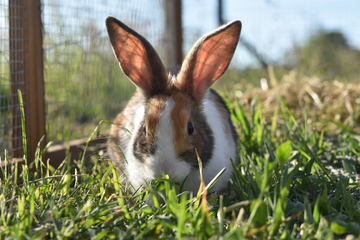
Rabbit Is It Low Maintenance or More Work Than You Think?
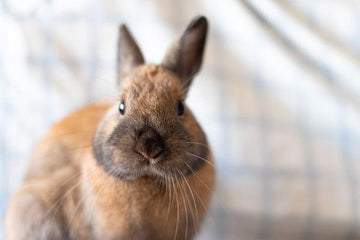
Signs of Rabbit Health: What You Should Know
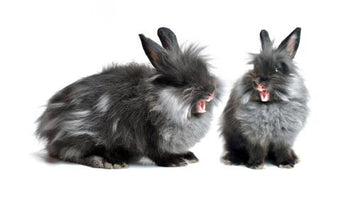
Decoding Bunny Behavior: Understanding Rabbit Mood
